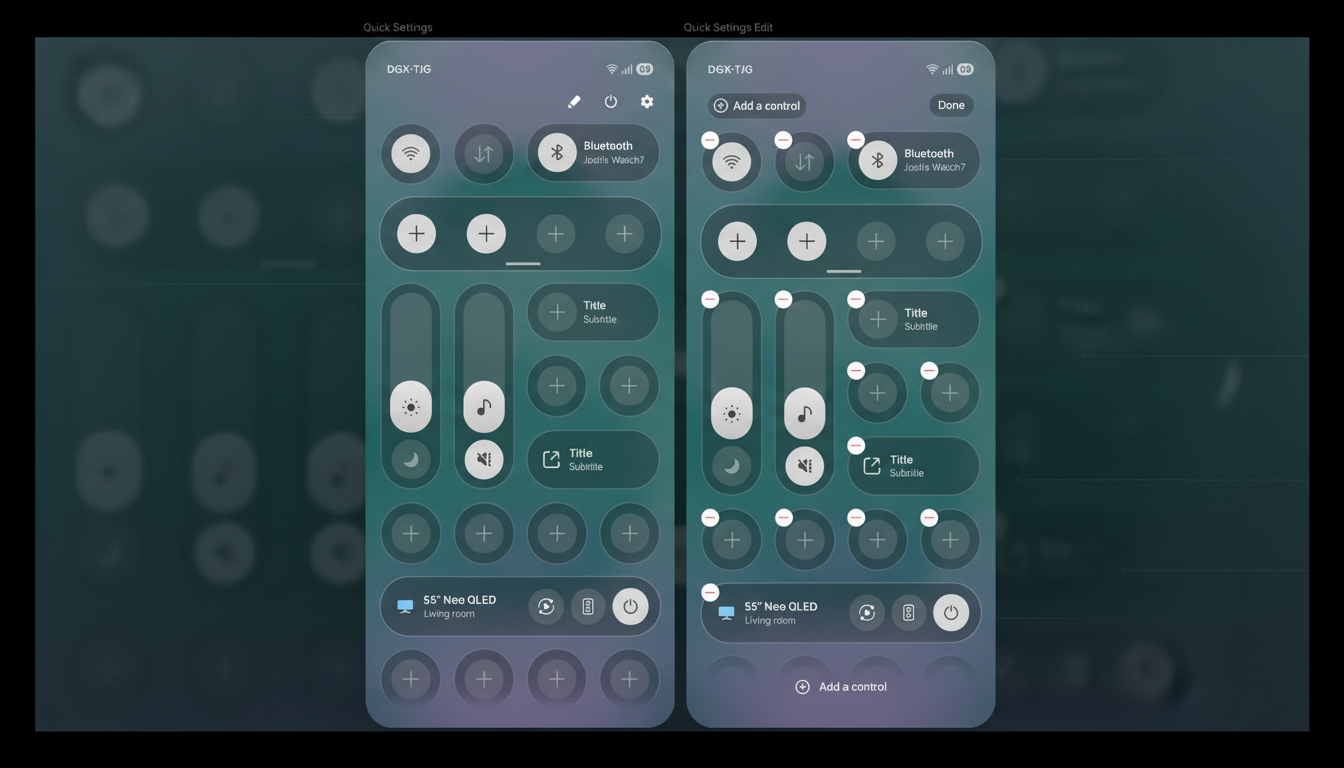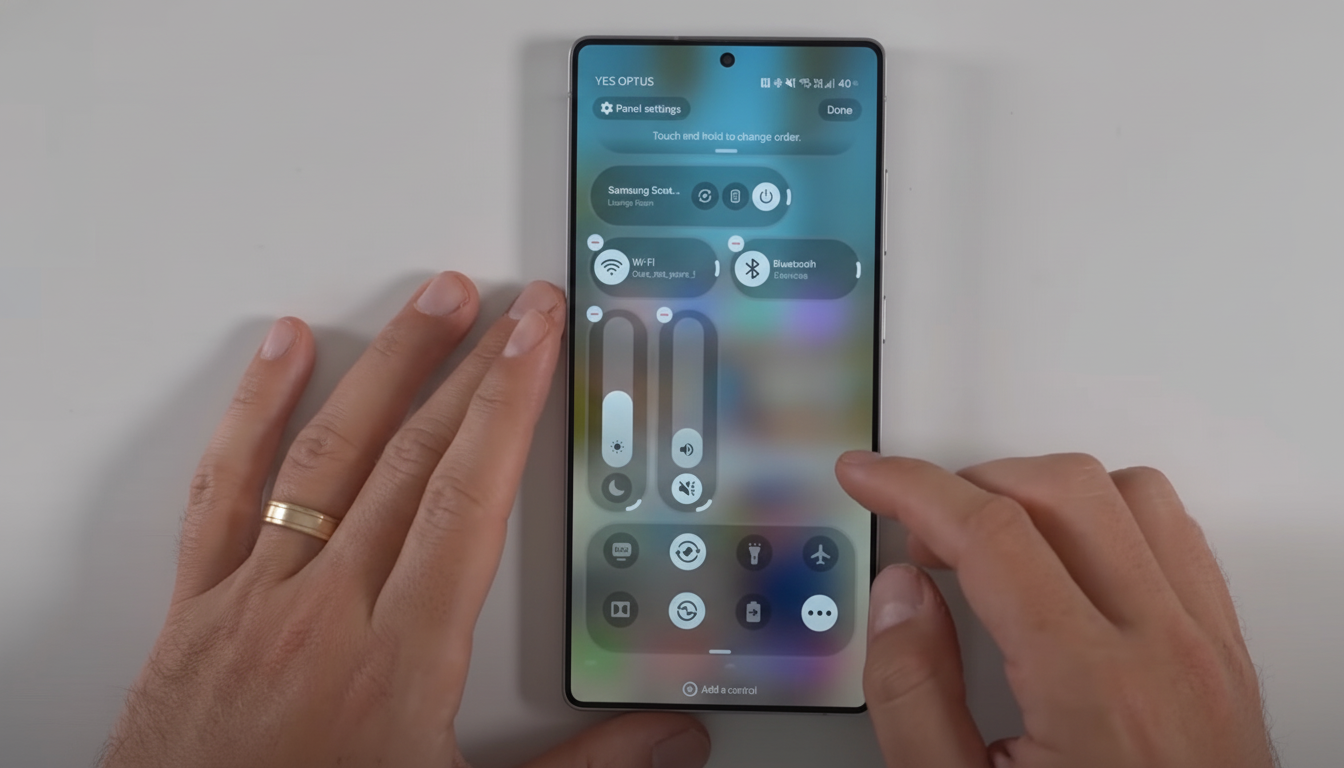Samsung’s next big software update should be more than just a shine. According to leaks of One UI 8.5 development builds, the Quick Settings panel will soon have a brighter, more transparent look and a new focus on customization. Screenshots published by leaker Tarun Vats and supported by separate reports from SamMobile show narrow tile boundaries, softer backgrounds, and a hint of translucency that nudges the interface toward fashionable “glassmorphism” without shedding its Galaxy identity. Again, this is beta code, but the intent is clear: make the panel simpler to read at a glance and easier to tweak for power users who spend all day here.
The most noticeable change is a thin dark boundary around each rectangle, especially apparent when a shortcut is switched off. It’s a tiny line but makes a significant impact: each item is neatly separated from the background and more visually distinct when you’re looking for Wi-Fi, flashlight, or hotspot. The leak also indicates a less saturated backdrop with a glass-like blur beneath. It boosts perceived contrast without increasing brightness, which helps readability on OLED panels. It aligns with user-interface principles, echoing some contrast arguments noted in the WCAG, with excessive contrast often seen as a sign of poor, not effective, design.

Observers may see a hint of recent iOS translucency trends, but Samsung’s take remains more modular and information-dense. Historically, the company favors compact controls and quick glyph-based cues, and the refreshed panel stays true to that formula while looking lighter on its feet.
Customization options hinted in early screenshots
Under the surface, One UI 8.5 appears to unlock new control over how Quick Settings behave. Early screenshots suggest the brightness and volume sliders can be decoupled, so you can keep one visible while tucking the other away. The same goes for splitting Bluetooth and Wi-Fi into distinct buttons rather than the current paired cluster. That matters if you rely on rapid adjustments throughout the day. Commuters who tweak brightness constantly can pin the slider up top, while gamers or creators can elevate volume controls without digging. Fewer taps, less friction.
Another report from sources points to tile resizing. The ability to enlarge priority toggles—say, hotspot or screen recorder—and shrink seldom-used ones mirrors what some Android previews have explored for system tiles. For accessibility, that’s also a win: larger hit targets equal fewer misses and make one-handed use easier on bigger screens.

- Thinner tile borders and softer, translucent backgrounds
- Decoupled brightness and volume sliders for flexibility
- Separate Bluetooth and Wi-Fi buttons for faster toggles
- Resizable tiles to prioritize key controls and improve reach
Performance considerations and expected rollout timing
Translucency and blur can add rendering overhead, but modern Galaxy hardware is well-equipped. Samsung’s recent flagships use adaptive refresh rates and efficient GPU pipelines that handle layered blur without obvious lag, and the company typically dials blur radius and opacity dynamically to keep animation frame rates steady.
On midrange or older devices, Samsung frequently dials down effects—tamer blur and simpler transparency—when the system perceives load. If the glassy look spreads widely, you can assume the implementation has been adjusted to device capabilities, not shipped as a one-off toggle.
As for timing, details are still uncertain, but industry chatter suggests One UI 8.5 will debut with the next Galaxy S flagships, followed by a staged rollout to current phones and tablets. Experimental builds are a work in progress, and features may not make it through; the alternate tiling options and exactly how decoupled sliders behave are worth watching. What’s clear is the direction: Samsung is refining the interface to feel snappier while giving enthusiasts more control. If the leaked interface is accurate, the Quick Settings panel should be more appealing and let you get in, get out, and get on with your day.

